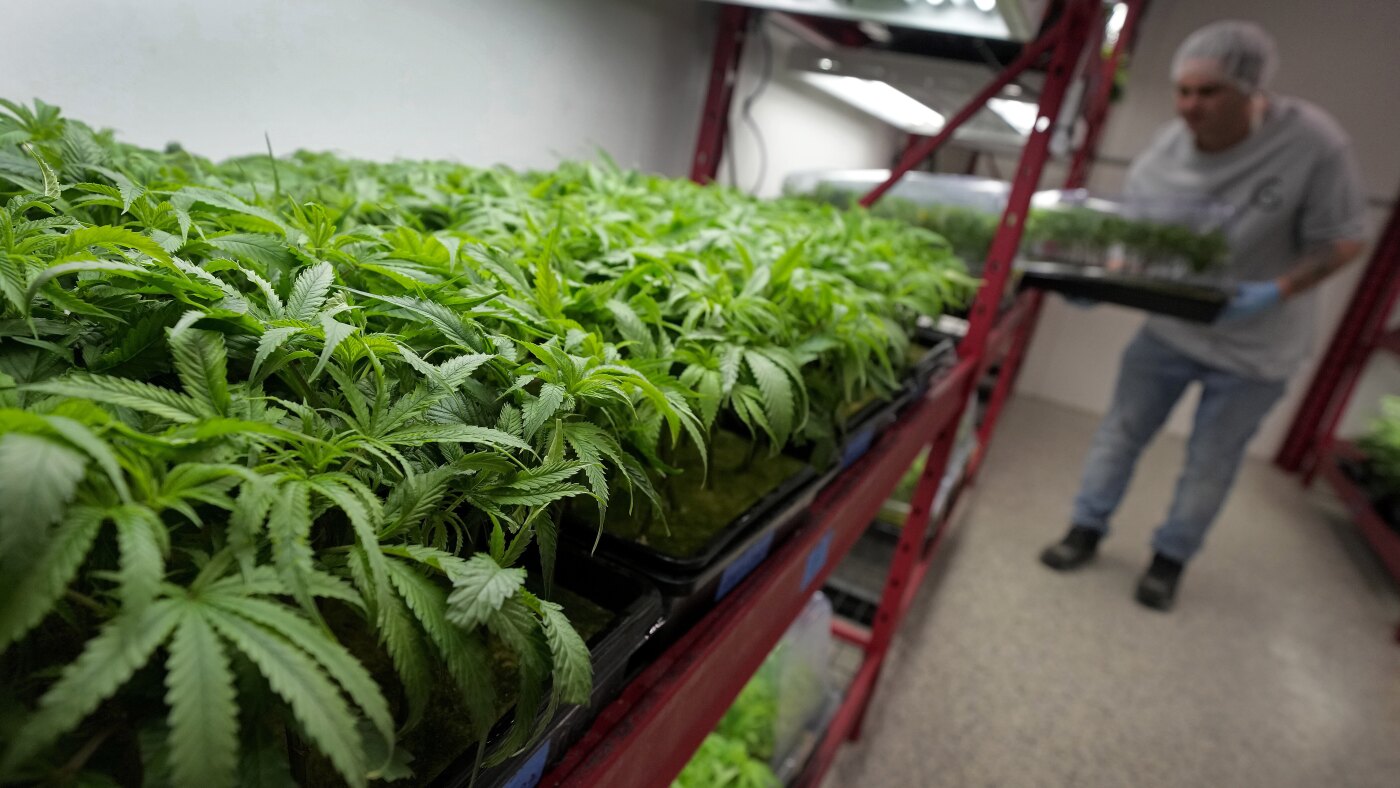Vermont
Vermont African American Heritage Trail tells stories of Black history in the state

Black history in Vermont includes some of the major events and personalities of Black history in America. The Underground Railroad passed through the Champlain Valley. Famed abolitionist Frederick Douglass delivered impassioned speeches in the state. The son of the Great Emancipator lived in a Vermont house that to this day hosts discussions about the inequalities of race in America.
There are also the quieter stories of Black history in Vermont. A Chittenden County farm became one of the largest African-American farms in the state. A small African-American community thrived in southern Chittenden County starting in the late 1700s. One Black Vermonter is said to be the first Black college graduate in the U.S., while another became the nation’s first African-American college president.
The state has designated these moments and more as part of the Vermont African American Heritage Trail consisting of buildings and markers commemorating significant moments in Black history. Consider visiting some of these sites in February to celebrate Black History Month. You might also want to keep them in mind to travel to when the weather is warmer and more of these sites are open, with the idea that Black history is a topic for every month of every year.
Sites in the Champlain Valley
Winooski United Methodist Church – Many of the renowned Buffalo Soldiers, a Black regiment known for fighting in the West and during the Spanish-American War, came to Fort Ethan Allen in Colchester in 1909 and became members of this nearby house of worship. “These church members played an active role in rebuilding the church, donating both time and money,” according to the church’s website.
Clemmons Family Farm – This 138-acre site in Charlotte protects the historic farm as “a model for preserving other African-American owned agricultural land,” according to its website. The Clemmons Family Farm also collaborates with artists from the African diaspora and, as its website notes, strives to “build a loving multicultural community around African-American/African diaspora history, arts and culture.”
Rokeby Museum – “Rokeby was the home of the Radical Abolitionist and devout Quaker Robinson family,” the Vermont Historical Society writes on its website about the Ferrisburgh home. “Rowland and Rachel Robinson wrote extensively, organized meetings, and lobbied on anti-slavery issues. They were part of the Underground Railroad network.” The museum presents exhibits and programs telling those stories.
Middlebury College/Town of Middlebury – The college was the first institution to grant an honorary degree and a Bachelor of Arts to men of African descent and was the first to graduate a Black man and a Black woman, according to the brochure for the Vermont African American Heritage Trail. The town, the brochure reads, was the site of the founding of the Vermont Anti-Slavery Society.
Sites elsewhere in Vermont
Senator Justin S. Morrill State Historic Site – The U.S. senator who lived in a brightly toned Gothic Revival home in Orange County sponsored an 1890 act to prevent racial discrimination in admissions policies for colleges receiving federal funding. The home’s website notes that it celebrates Morrill’s work toward dismantling of slavery and affirming equal rights while acknowledging “the shortcomings and unfulfilled promises of some aspects of his work.”
Orleans County Historical Society/Old Stone House Museum – This Northeast Kingdom site tells the story of Alexander Twilight, who, the Vermont African American Heritage Trail brochure notes, was “an African American educator, preacher, and Vermont’s first Black legislator.” The museum’s website mentions that “Middlebury claims him to be the first African-American to earn a baccalaureate from an American college or university.”
Rutland Sculpture Trail – The sculpture trail in this central Vermont city covers many sites and stories, some of which highlight Black history in the region. The trail displays depictions of the 54th Massachusetts Infantry Regiment that included Black soldiers from Vermont as well as a bust of Martin Henry Freeman, an abolitionist, educator and first African-American college president (at the all-black Allegheny Institute).
Hildene, the Lincoln family home – Robert Lincoln, the son of President Abraham Lincoln (“the Great Emancipator”), was president of the Pullman Palace Car Co. when he moved to southern Vermont in the early 1900s. “The site’s 1903 Pullman Car and ‘Many Voices’ exhibit highlight the history of the company and the story of the Black Pullman Porters,” according to the Vermont African American Heritage Trail brochure.
- Hildene, the Lincoln family home, 1005 Hildene Road, Manchester. www.hildene.org
A selection of historic markers
Thaddeus Stevens – A marker in Danville commemorates the town native who became a U.S. senator from Pennsylvania and, according to the marker, “was both renown and reviled for his eloquent call for the abolition of slavery.”
Andrew Harris – Located at the University of Vermont in Burlington, the sign honoring the 1838 UVM graduate remarks that he was one of the first African Americans to earn a college degree and co-founded the American & Foreign Anti-Slavery Society.
Centennial Field – The Vermont African American Heritage Trail brochure notes that the three ballparks that have occupied the current’s park’s space at the University of Vermont hosted exhibition games for Negro League baseball clubs.
Early Black settlers – A sign at Lincoln Hill and North roads in the town of Hinesburg pays tribute to “at least six related families by the end of the Civil War (who) cleared the land, joined the local Baptist church, had home manufactories, and exercised their voting rights at Freeman Meetings.”
“The Great Convention” – “Frederick Douglass delivered a fiery abolitionist speech here in July 1843,” reads a marker on U.S. 7. “The Ferrisburgh meeting, organized by local activist Rowland T. Robinson, was one of the ‘100 Conventions’ sponsored by the American Anti-Slavery Society.”
Court Square – The first Addison County courthouse in Middlebury had an 1804 court case involving a man trying to reclaim an escaped slave. Justice Theophilus Harrington famously declared he would accept “Nothing short of a bill of sale signed by God Almighty Himself.” The former slave went free.
If you go
Rokeby Museum in Ferrisburgh is presenting events during Black History Month in February:
- 10 a.m.-4 p.m. Saturday, Feb. 15, free museum day includes an opportunity to visit the site’s main exhibit, “Seeking Freedom: The Underground Railroad and the Legacy of an Abolitionist Family.”
- 6-7 p.m. Tuesday, Feb. 18, the virtual winter book discussion group talks about “The Life of Frederick Douglass” by David F. Walker, Damon Smyth and Marissa Louise
- www.rokeby.org
For more information
Vermont African American Heritage Trail – www.vtaaht.org
Contact Brent Hallenbeck at bhallenbeck@freepressmedia.com.

Vermont
VT Lottery Lucky For Life, Pick 3 results for Jan. 4, 2026
Powerball, Mega Millions jackpots: What to know in case you win
Here’s what to know in case you win the Powerball or Mega Millions jackpot.
Just the FAQs, USA TODAY
The Vermont Lottery offers several draw games for those willing to make a bet to win big.
Those who want to play can enter the MegaBucks and Lucky for Life games as well as the national Powerball and Mega Millions games. Vermont also partners with New Hampshire and Maine for the Tri-State Lottery, which includes the Mega Bucks, Gimme 5 as well as the Pick 3 and Pick 4.
Drawings are held at regular days and times, check the end of this story to see the schedule. Here’s a look at Jan. 4, 2026, results for each game:
Winning Lucky For Life VT numbers from Jan. 4 drawing
03-08-13-38-47, Lucky Ball: 02
Check Lucky For Life VT payouts and previous drawings here.
Winning Pick 3 numbers from Jan. 4 drawing
Day: 5-2-1
Evening: 0-7-7
Check Pick 3 payouts and previous drawings here.
Winning Pick 4 numbers from Jan. 4 drawing
Day: 7-8-2-2
Evening: 0-2-9-1
Check Pick 4 payouts and previous drawings here.
Feeling lucky? Explore the latest lottery news & results
Are you a winner? Here’s how to claim your lottery prize
For Vermont Lottery prizes up to $499, winners can claim their prize at any authorized Vermont Lottery retailer or at the Vermont Lottery Headquarters by presenting the signed winning ticket for validation. Prizes between $500 and $5,000 can be claimed at any M&T Bank location in Vermont during the Vermont Lottery Office’s business hours, which are 8a.m.-4p.m. Monday through Friday, except state holidays.
For prizes over $5,000, claims must be made in person at the Vermont Lottery headquarters. In addition to signing your ticket, you will need to bring a government-issued photo ID, and a completed claim form.
All prize claims must be submitted within one year of the drawing date. For more information on prize claims or to download a Vermont Lottery Claim Form, visit the Vermont Lottery’s FAQ page or contact their customer service line at (802) 479-5686.
Vermont Lottery Headquarters
1311 US Route 302, Suite 100
Barre, VT
05641
When are the Vermont Lottery drawings held?
- Powerball: 10:59 p.m. Monday, Wednesday, and Saturday.
- Mega Millions: 11 p.m. Tuesday and Friday.
- Gimme 5: 6:55 p.m. Monday through Friday.
- Lucky for Life: 10:38 p.m. daily.
- Pick 3 Day: 1:10 p.m. daily.
- Pick 4 Day: 1:10 p.m. daily.
- Pick 3 Evening: 6:55 p.m. daily.
- Pick 4 Evening: 6:55 p.m. daily.
- Megabucks: 7:59 p.m. Monday, Wednesday and Saturday.
What is Vermont Lottery Second Chance?
Vermont’s 2nd Chance lottery lets players enter eligible non-winning instant scratch tickets into a drawing to win cash and/or other prizes. Players must register through the state’s official Lottery website or app. The drawings are held quarterly or are part of an additional promotion, and are done at Pollard Banknote Limited in Winnipeg, MB, Canada.
This results page was generated automatically using information from TinBu and a template written and reviewed by a Vermont editor. You can send feedback using this form.
Vermont
Vermont’s congressional delegation condemns attack on Venezuela and capture of Maduro – VTDigger

Vermont’s congressional delegation condemned the U.S. military’s attack on Venezuela over the weekend that led to the capture of the country’s leader, Nicolás Maduro.
U.S. Sen. Bernie Sanders, I-Vt, and Vermont Democrats U.S. Sen. Peter Welch and U.S. Rep Becca Balint, all labeled Maduro a brutal authoritarian but said President Donald Trump’s attacks on the South American country exceeded his constitutional authority.
“Trump’s attack on Venezuela will make the United States and the world less safe. This brazen violation of international law gives a green light to any nation on earth that may wish to attack another country to seize their resources or change their governments,” Sanders said in a statement.
U.S. forces entered the Venezuelan capital of Caracas overnight Friday into Saturday, and more than 100 U.S. aircraft helped neutralize the country’s air defenses, the New York Times reported. More than 40 people were killed, according to Venezuelan authorities, though Trump said there were no Americans killed in the attack.
American troops captured both Maduro and his wife, Cilia Flores, later transporting them out of the country, according to news reports. U.S. Attorney General Pam Bondi said Maduro would face charges in the U.S. of narco-terrorism conspiracy and cocaine importation conspiracy, among other charges.
Trump said Saturday that the U.S. would “run” Venezuela while a transfer of power took place. The details of that plan were not immediately clear, though many of Trump’s comments focused on growing the Venezuelan oil industry.
Vermont’s top federal lawmakers wasted little time in condemning the military escalation. They had similarly criticized the staging of Vermont Air National Guard members in the Caribbean to support the military buildup against Venezuela.
“President Trump’s hunger for a regime change war makes it clear he doesn’t care about how this unauthorized and illegal action could cause further chaos and suffering in Venezuela. Has he learned nothing from Iraq, Afghanistan, and Libya?” Welch said in a statement Saturday. “This could lead us into another forever war, risking the lives of U.S. service members and hurting the economy.”
Balint, in her own statement, said the U.S. had made “these horrible mistakes before.”
“Americans do not want another war,” she said.
Vermont
Vermont by Hamilton Homebuilders | 4 bed, 3 bath mobile house tour

-

 World1 week ago
World1 week agoHamas builds new terror regime in Gaza, recruiting teens amid problematic election
-

 Business1 week ago
Business1 week agoGoogle is at last letting users swap out embarrassing Gmail addresses without losing their data
-

 Indianapolis, IN1 week ago
Indianapolis, IN1 week agoIndianapolis Colts playoffs: Updated elimination scenario, AFC standings, playoff picture for Week 17
-

 Southeast1 week ago
Southeast1 week agoTwo attorneys vanish during Florida fishing trip as ‘heartbroken’ wife pleads for help finding them
-

 News1 week ago
News1 week agoRoads could remain slick, icy Saturday morning in Philadelphia area, tracking another storm on the way
-

 Politics1 week ago
Politics1 week agoMost shocking examples of Chinese espionage uncovered by the US this year: ‘Just the tip of the iceberg’
-

 News1 week ago
News1 week agoMarijuana rescheduling would bring some immediate changes, but others will take time
-

 World1 week ago
World1 week agoPodcast: The 2025 EU-US relationship explained simply

















